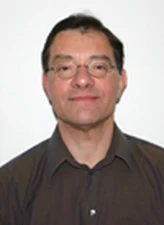Mark S. Ghiorso

The 2010 Robert Wilhelm Bunsen Medal is awarded to Mark S. Ghiorso for his outstanding contribution in the field of multiphase, multi-component silicate melt thermodynamics. Ghiorso substantially advanced knowledge and capabilities in that field by developing, updating and releasing computational resources representing the state-of-the-art during last twenty years. His work continues to represent a reference and inspiration for generations of scientists who make daily use of Mark’s codes to decipher their observations, test their hypotheses or develop new ones.
The three-decades long work by Mark S. Ghiorso on the thermodynamics of multiphase, multi-component silicate mixtures stands as the masterpiece in the field of computational petrochemistry, and represents the reference for generations of scientists who based their research largely on the ideas, concepts, quantities and codes that Ghiorso has developed during that time. He provided the most complete quantitative description of the crystallisation paths of silicate melts under a wide range of P-T-X conditions, showing that such an extremely complex issue can and must be faced in a comprehensive, rigorous and quantitative way.
Ghiorso’s approach to science has been characterised by the firm belief that each scientific advancement is a resource that must be made freely and fully available to other scientists. The computational codes that he has been regularly producing, testing, releasing and updating, among which the famous MELTS code in its various versions, allow scientists throughout the world to test their ideas and hypotheses and to develop new ones. Ghiorso’s comprehensive approach to multi-component phase relationships in silicate melts has also been an inspiration for young and experienced scientists, who found in his papers detailed descriptions of both the basic physics and the numerical approaches, as well as an enormous database of internally consistent thermodynamic quantities on which to base their own research developments.
